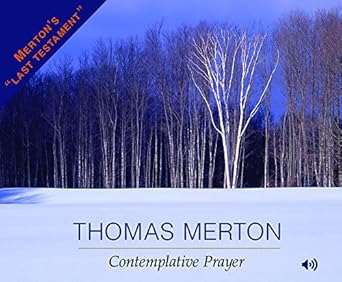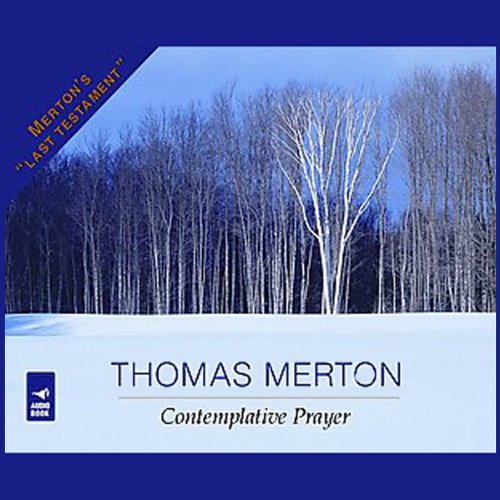In an increasingly noisy world, where distractions abound and constant connectivity is the norm, the quest for silence has never been more crucial. The contemplative practices promoted by the Trappist monk and writer Thomas Merton offer profound insights into the transformative power of silence and prayer. This article explores Merton’s teachings on contemplative prayer, its significance, and the profound changes it can bring to our lives.
Understanding Thomas Merton and His Legacy

Thomas Merton (1915-1968) was a renowned American Trappist monk, writer, theologian, mystic, and peace activist. His works, which include “The Seven Storey Mountain,” have inspired countless individuals seeking spiritual enlightenment and a deeper understanding of themselves and the world. Merton’s emphasis on silence and contemplation is not just an esoteric practice; it serves as a pathway to personal transformation.
Merton’s Concept of Silence

Merton viewed silence as more than the absence of sound; he saw it as a vital space for spiritual growth. He believed that silence allows individuals to connect with God, their true selves, and the world around them. In Merton’s words, “Silence is the only language of God, and all else is poor translation.” This concept underlines the importance of cultivating moments of stillness and reflection in our lives.
The Importance of Contemplative Prayer
Contemplative prayer, as advocated by Merton, is an approach to prayer that emphasizes inner stillness and awareness of God’s presence. It is a practice that goes beyond verbal communication and seeks to establish a profound connection with the divine. Here are some key aspects of contemplative prayer:
- Inner Stillness: The practice encourages individuals to quiet their minds and detach from external distractions.
- Awareness of Presence: It fosters an acute awareness of God’s presence in everyday life.
- Self-Reflection: Contemplative prayer allows for deep self-examination and understanding of one’s thoughts and feelings.
- Non-Verbal Communication: It transcends spoken words, creating a space for experiencing God beyond language.
The Process of Contemplative Prayer

Merton detailed a process for engaging in contemplative prayer, which can be summarized in several steps:
- Preparation: Find a quiet space free from distractions. Set aside a dedicated time for your practice.
- Posture: Adopt a comfortable position, whether seated or kneeling, that allows for relaxation while remaining alert.
- Focus: Begin with a simple word or phrase that resonates with you, such as “peace” or “love,” to help center your thoughts.
- Letting Go: Allow your thoughts to come and go without judgment. Return to your focus when you feel your mind wandering.
- Listening: Open your heart to receive insights and feelings that may arise during this time of stillness.
The Psychological and Spiritual Benefits of Silence
Research supports the idea that silence and contemplative practices can have significant psychological and spiritual benefits. Here are some key findings:
- Stress Reduction: Studies indicate that silence and meditation can lower cortisol levels, reducing stress and anxiety.
- Enhanced Focus: Engaging in contemplative practices can improve attention span and cognitive function.
- Emotional Well-Being: Individuals who practice silence report higher levels of happiness and lower levels of depressive symptoms.
- Spiritual Growth: Many find that contemplative prayer deepens their relationship with the divine and enhances their spiritual lives.
Case Studies in Contemplative Practice

Numerous individuals and organizations have embraced Merton’s teachings, with transformative results. Here are a few notable examples:
- Retreat Centers: Many retreat centers based on contemplative principles have reported that participants often emerge with a renewed sense of purpose and clarity.
- Workplace Silence Initiatives: Companies that incorporate moments of silence into their daily schedules have noted increased productivity and employee satisfaction.
- Therapeutic Practices: Therapists and counselors who integrate contemplative practices into their sessions report improved outcomes for clients dealing with anxiety and trauma.
Integrating Silence into Daily Life

Incorporating moments of silence into our busy lives can be challenging but is essential for fostering personal transformation. Here are practical tips for integrating silence and contemplative prayer into daily routines:
- Start Small: Begin with just a few minutes of silence each day, gradually increasing the duration as you become more comfortable.
- Create a Sacred Space: Designate a specific area in your home for contemplation, filled with items that inspire peace and reflection.
- Use Guided Meditations: Consider using apps or recordings that offer guided contemplative practices to help you get started.
- Practice Mindfulness: Engage in mindful activities, such as walking in nature or eating a meal, fully immersed in the experience without distractions.
- Join a Community: Seek out groups or classes that focus on contemplative practices, providing support and encouragement on your journey.
The Challenges of Embracing Silence
While the benefits of silence and contemplative prayer are clear, many individuals face challenges when attempting to embrace these practices:
- Fear of Stillness: Some may feel uncomfortable or anxious when faced with silence, fearing what they might discover about themselves.
- Distractions: The modern world is filled with distractions that can make it difficult to carve out time for silence.
- Impatience: People often expect immediate results from their contemplative practices, leading to frustration if they do not experience instant transformation.
Conclusion: The Transformative Journey of Silence

Thomas Merton’s insights into the transformative power of silence and contemplative prayer provide a valuable roadmap for individuals seeking personal and spiritual growth. By embracing moments of stillness, we can cultivate a deeper connection with ourselves, others, and the divine. The psychological, emotional, and spiritual benefits of contemplative practices are supported by research and real-life examples, reinforcing the idea that silence is not merely an absence but rather a profound presence that can lead to transformation.
As we navigate the cacophony of modern life, let us heed Merton’s call to seek silence and contemplation. By integrating these practices into our daily routines, we open ourselves to the possibility of profound change, allowing us to live more fully in the present and connect with the deeper aspects of our existence.




